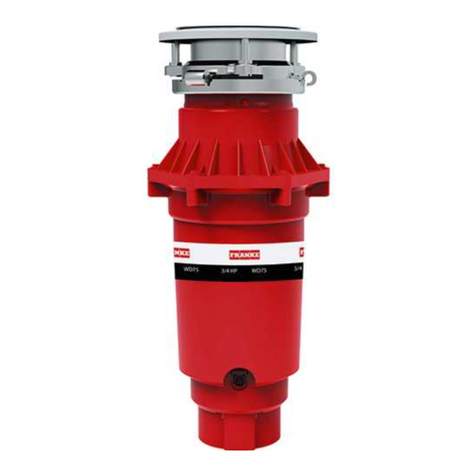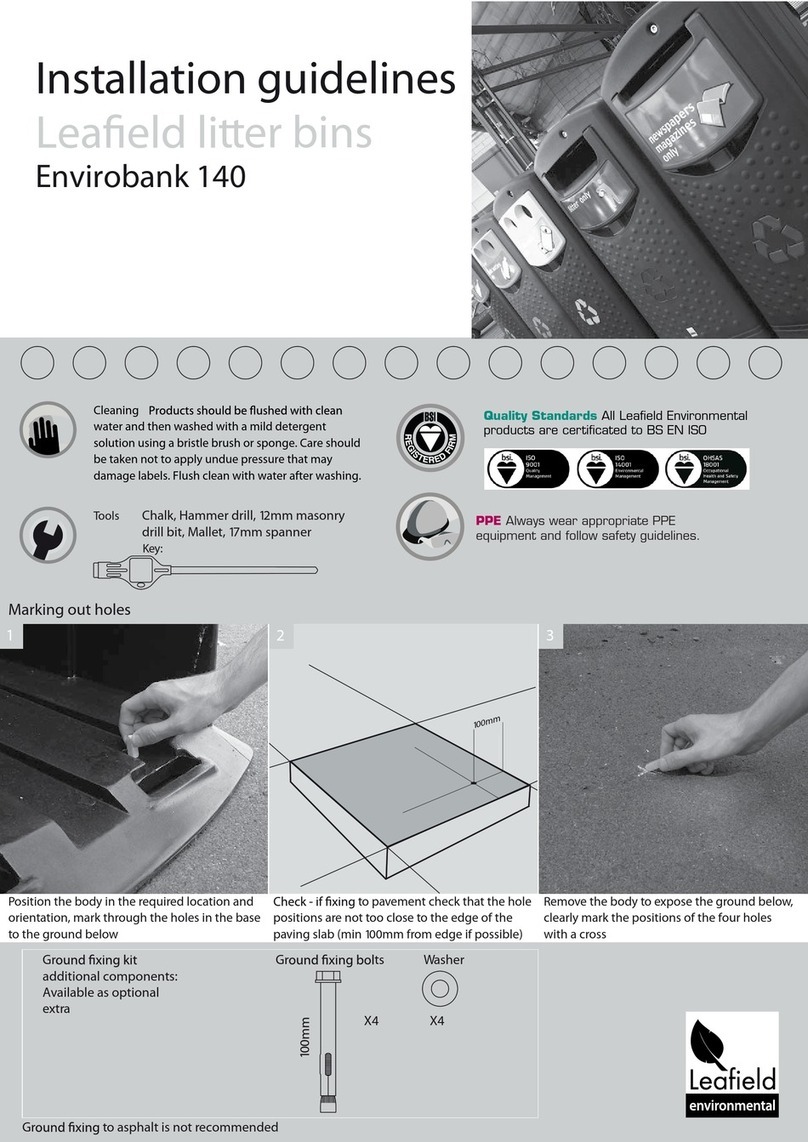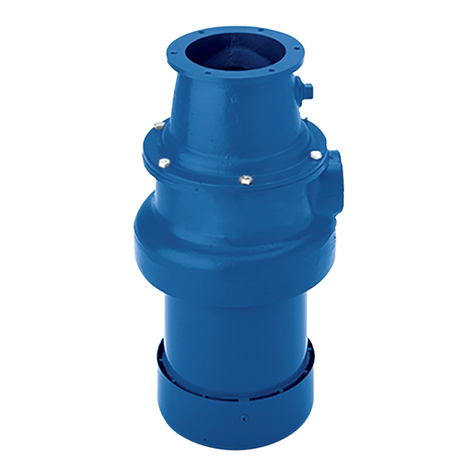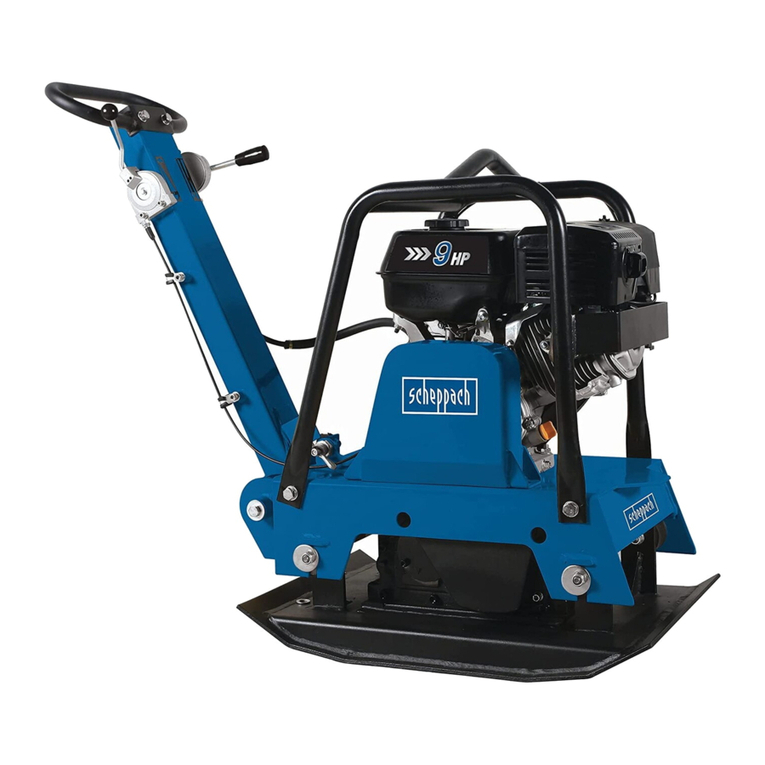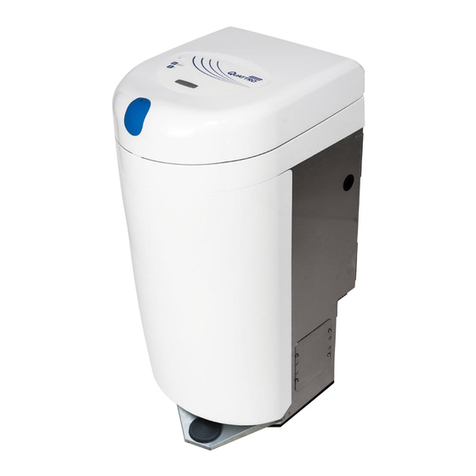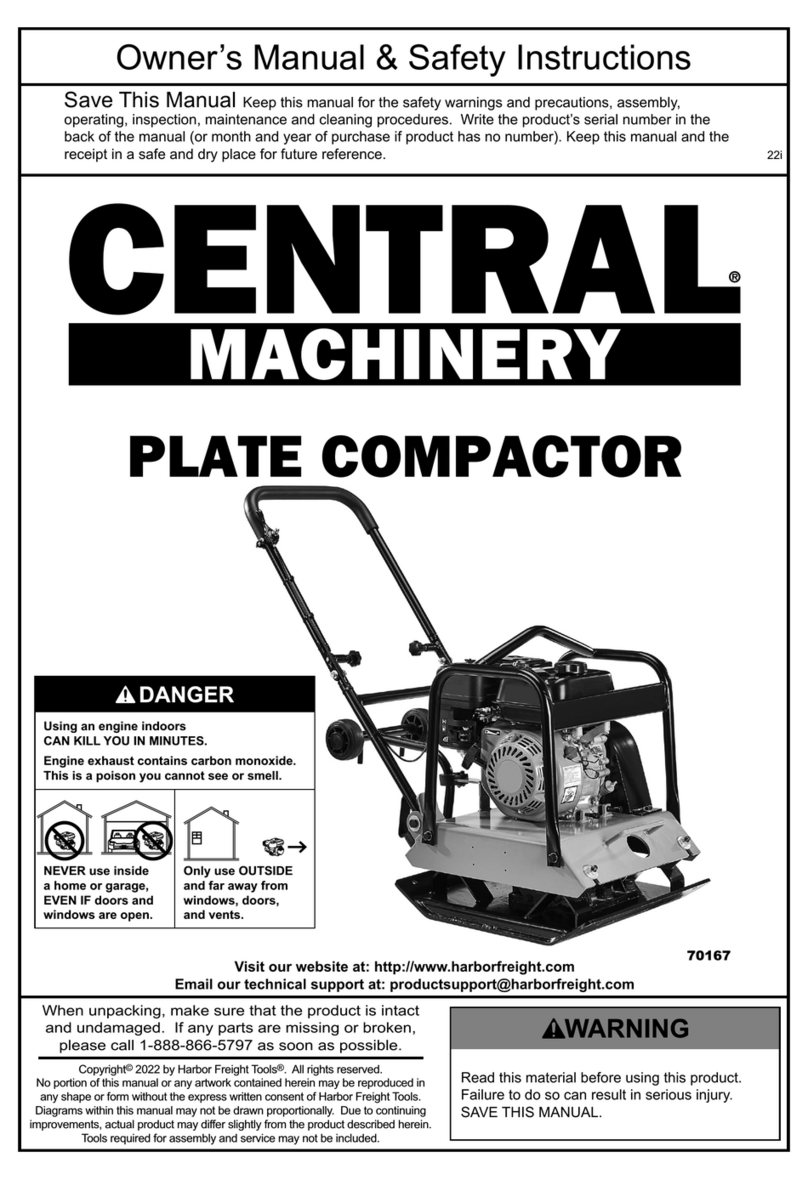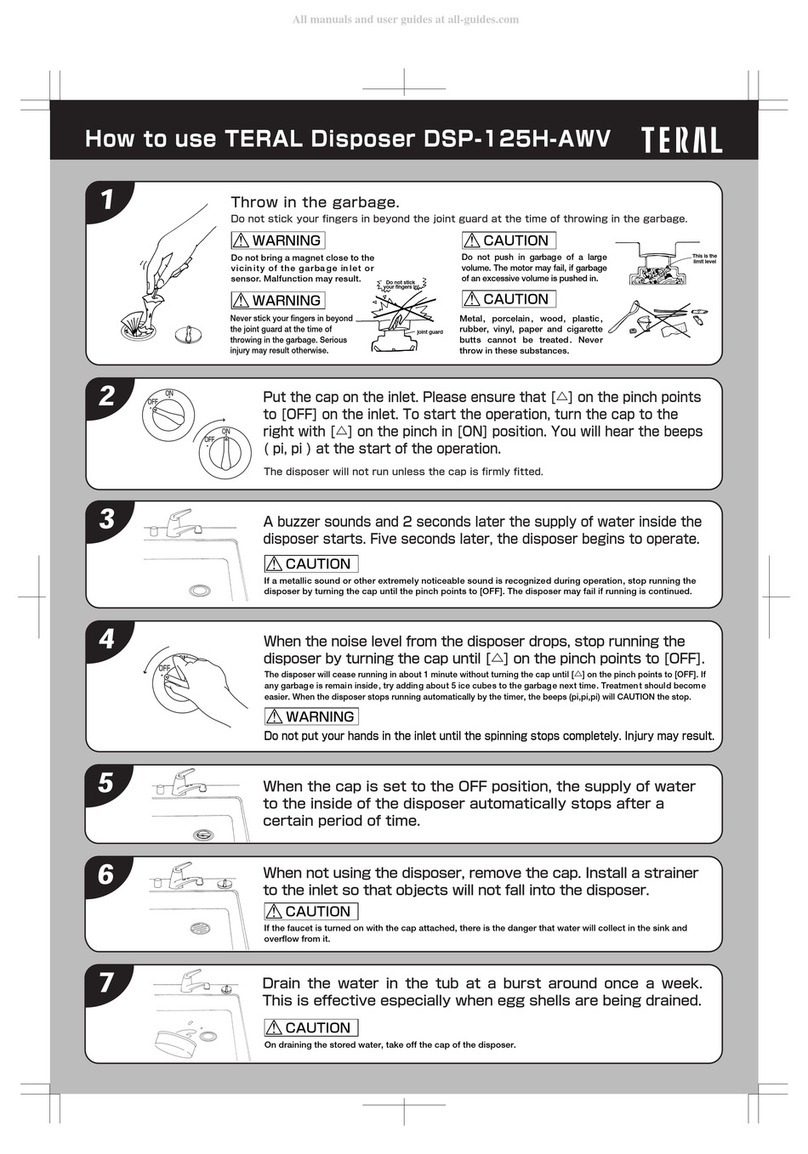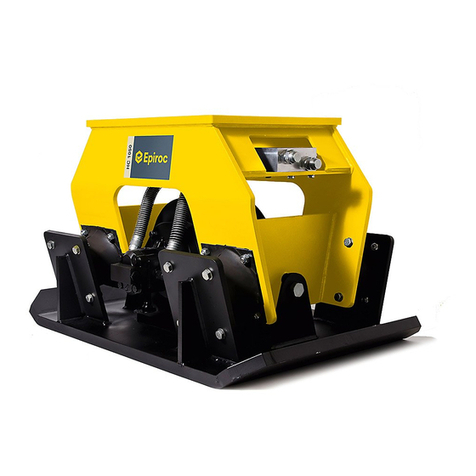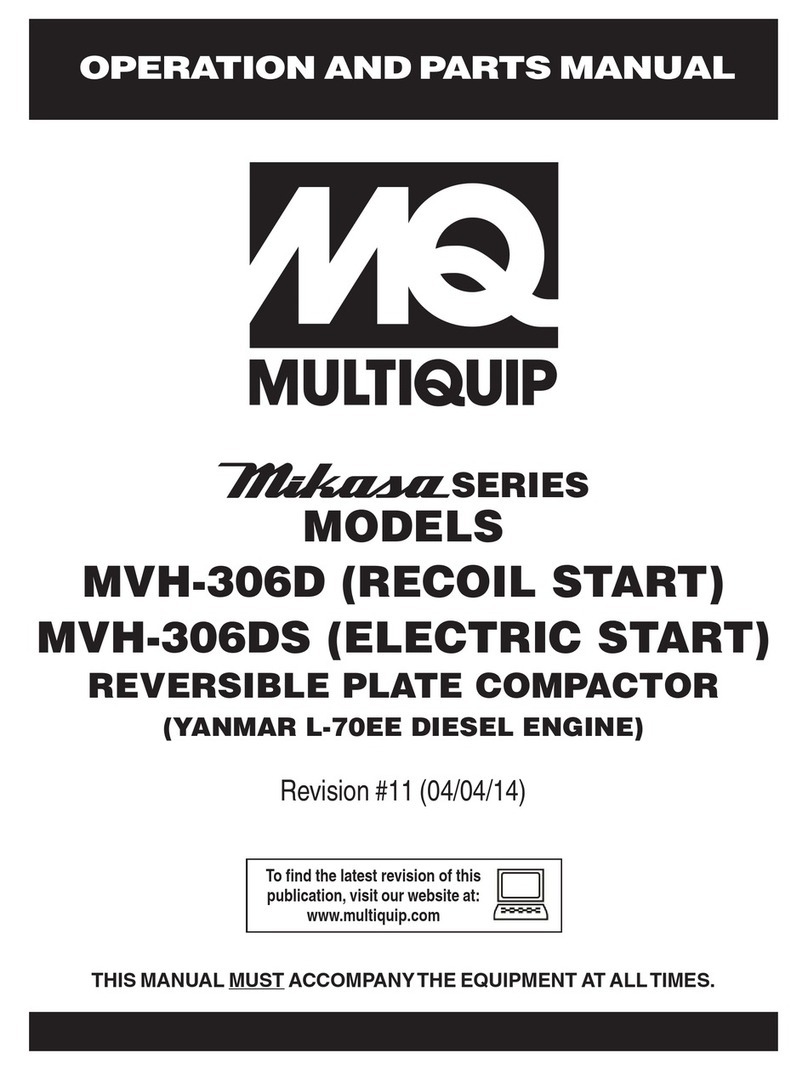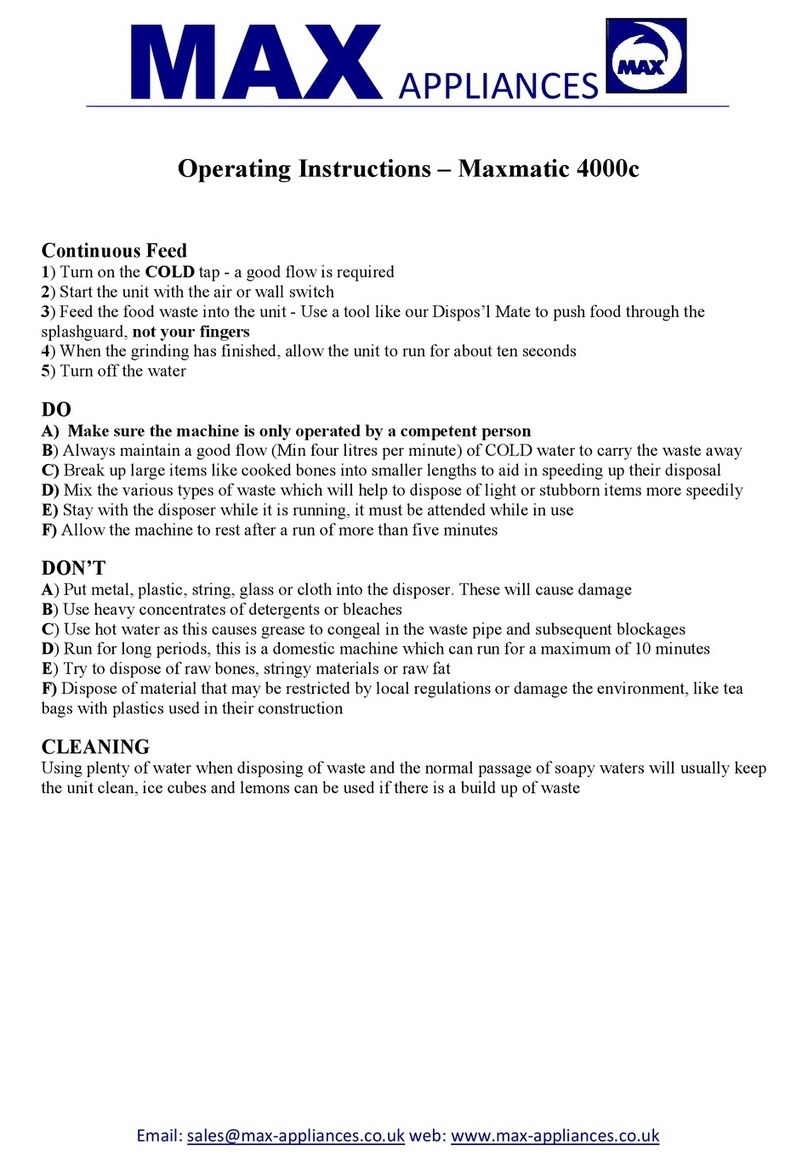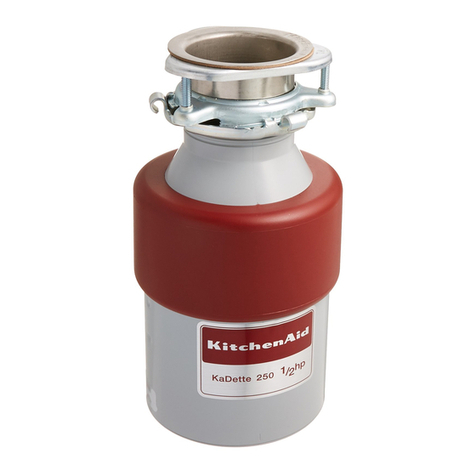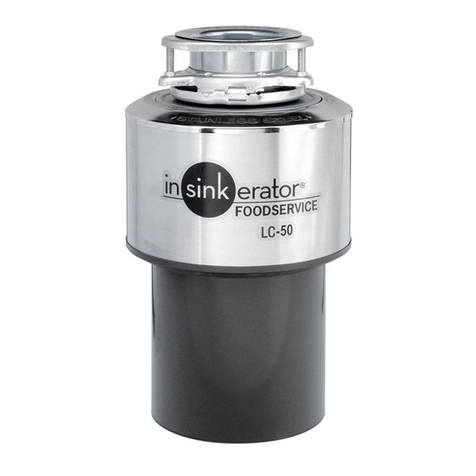
A. Line up disposer under mounting assembly. Guide
hopper projections into mount ring slots. Turn mount
ring about 1/4” to right so that disposer is temporarily
supported (see 6A).
B. Turn mount ring and disposer until disposer elbow
lines up with trap (see 6B).
C. Turn mount ring to the right (counter-clockwise) until
it locks up tight. Tap the mount ring ears with a ham-
mer until the lock position is achieved. Hopper
projections must be to extreme left of mounting slots
(see 6C & 6D).
D. If mount ring is hard to turn, you may add a small
amount of petroleum jelly or liquid soap to hopper pro-
jections. Run water and check for leaks.
6C
6B
ELBOW
TRAP
LOCKING DETAIL
HOPPER PROJECTION IN
“SUPPORTED” POSITION
HOPPER PROJECTION IN
“LOCK” POSITION
MOUNT
RING
.6 C O N N E C T I N G D I S P O S E R T O M O U N T A S S E M B L Y
SLOT PROJECTION
6A
6D
7 . O P E R A T I N G I N S T R U C T I O N S
The Anti-Jam Swivel Impellers make a clicking
sound as they initially swing into place. This
indicates normal operation.
A. Remove sink stopper. Turn on a medium flow of cold
water.
B. Turn switch to ON position; your motor is turning at full
speed and ready to use.
C. Scrape in food waste. Down the drain go table scraps,
peelings, rinds, seeds, pits, small bones and coffee
grounds. To speed up food waste disposal, cut or
break up large bones, rinds and cobs. Large bones
and fibrous waste require considerable grinding time
and are more easily thrown away with other trash. Do
not be alarmed that the disposer slows down while
grinding. The disposer is actually increasing torque
(grinding power) and is operating under normal condi-
tions.
D. Before turning disposer off, let water and disposer run
for approximately 15 seconds after shredding or
grinding stops. This assures that all waste is thor-
oughly flushed through trap and drain.
E. It is not recommended to use hot water while running
disposer. Cold water will keep waste and fats solid so
disposer can flush away particles.
TIPS FOR SUCCESSFUL OPERATION
A. Be sure disposer is empty before using your dishwasher so it may drain properly.
B.
You may want to leave the stopper in the drain when not in use to prevent utensils and foreign objects from falling into the disposer.
C. Your disposer is ruggedly built to give you many years of trouble free service. It will handle all normal food wastes,
but it will NOT grind or dispose of such items as plastic, tin cans, bottle caps, glass, china, leather, cloth, rubber, string,
clam and oyster shells, aluminum foil or feathers.
Before seeking repair or replacement, we rec-
ommend that you review the following:
LOUD NOISES: (Other than those during grinding of small
bones and fruit pits): These are usually caused by acci-
dental entry of a spoon, bottle cap or other foreign object.
To correct this, turn off electrical switch and water. After
disposer has stopped, remove splash guard, remove
object with long handled tongs, and replace splash guard.
UNIT DOES NOT START: Unplug power cord or turn
either the wall switch or breaker box switch to “OFF” posi-
tion, depending on your model and wiring configuration.
Remove stopper and/or splash guard. Check to see if
turntable will rotate freely using a wooden broom handle. If
turntable rotates freely, replace splash guard and check
reset button to see if it has been tripped. Reset button is
red and located on the front of the disposer. Push button in
until it clicks and remains depressed.
If reset button has not been tripped, check for shorted or
broken wire connecting to disposer. Check electrical
power switch, fuse box or circuit breaker. If wiring and
electrical components are intact, the unit may have internal
problems that require service or replacement.
IF TURNTABLE DOES NOT ROTATE FREELY: Turn off
disposer, then check for any foreign object lodged between
the turntable and grind ring. Dislodge object by rotating
table with a wooden broom handle (see 8A) and remove
object. If no foreign object is present, there may be inter-
nal problems.
8A
TURNTABLE
REMOVE
SPLASH
GUARD
9 . T R O U B L E S H O O T I N G
LEAKS:
If the unit leaks at the top, it may be
due to:
1.
Improper sealant of sink flange
(gasket, caulking, putty or tightening).
2.
Support ring not tightened
properly.
3. Defective or improperly installed
cushion mount.
If unit leaks at the waste elbow, leak
may be due to improper tightening of
elbow flange screws.
D. NEVER put lye or chemical drain cleaners into the disposer, as they cause serious corrosion of metal parts. If used,
resulting damage can be easily detected and all warranties are void.
F.
Do not lubricate your disposer. The motor is permanently
lubricated. The disposer is self cleaning and scours its
internal parts with each use.
